
|
![]()
Greatest Films of the 1970s
1970 | 1971 | 1972 | 1973 | 1974 | 1975 | 1976 | 1977 | 1978 | 1979
Title Screen Film Genre(s), Title, Year, (Country), Length, Director, Description 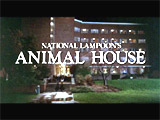


(National Lampoon's) Animal House (1978), 109 minutes, D: John Landis
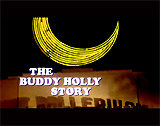

The Buddy Holly Story (1978), 113 minutes, D: Steve Rash


La Cage aux Folles (1978, Fr./It.) (aka Birds of a Feather), 91 minutes, D: Edouard Molinaro
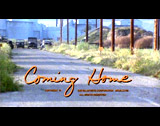


Coming Home (1978), 126 minutes, D: Hal Ashby


Dawn of the Dead (1978, It./US), 126 minutes, D: George A. Romero
See the six-film Dead film series - this film came after Night of the Living Dead (1968), and was followed by Day of the Dead (1985), Land of the Dead (2005), Diary of the Dead (2007), and Survival of the Dead (2009). This was the most profitable of all of Romero's zombie films and the one that was received most favorably by critics. It was remade as Dawn of the Dead (2004) by Zack Snyder (his feature film debut). The satirical film was a indictment of seventies consumerism, as it showed the group looting the mall and living the American Dream in a barricaded storage area, distracted by their material luxuries while undead danger lurked nearby. The biting social satire equated zombies with brainwashed automaton consumers slowly shuffling their way through malls as soothing Muzak played. Why did the zombies congregate there? As one character explained, "Some kind of instinct. Memory of what they used to do. This was an important place in their lives." In the story around Philadelphia, PA, the dead were unexpectedly re-animating into flesh-eating zombies, and the ravenous, shuffling zombies were on the attack. Four survivors sought refuge in a deserted suburban shopping mall from ravenous zombies - and from a gang of post-apocalyptic bikers. They included pregnant WGON-TV anchorwoman Francine Parker (Gaylen Ross), her traffic helicopter-pilot boyfriend Stephen "Flyboy" Andrews (David Emge), and two Philadelphia SWAT cops Roger "Trooper" DeMarco (Scott Reiniger) and Peter Washington (Ken Foree). They flew in a helicopter from Philadelphia to Western Pennsylvania (the Pittsburgh area), where they barricaded themselves within a well-stocked mall for sanctuary. They set up a 'home' in an upstairs area (with supplies gathered from the stores) to defend themselves. After blocking the main doors of the mall with trucks, and eliminating all the zombies inside the mall, the group went on a shopping spree. Roger was the first to die from an infected bite, and had to be killed after reanimating. Zombies could only be killed by fire or by destroying their brains. After weeks in their safe storage area, a motorcycle gang invaded the mall by opening the doors (letting the zombies in again), and then looted the mall's stores. Stephen and Peter engaged in a gunfight with the intruders. Over time, the marauding, survivalist cyclists were shot dead by Peter or massacred by zombies. The wounded Stephen (shot in the arm) was mauled to death by zombies in an elevator - and then reanimated to join them. By dawn of the next day, only Peter and Francine had survived, and they planned to exit the mall in the TV station's helicopter on the roof that had brought them there. In the exciting conclusion, the undead Stephen led the zombies to the hidden storage area home-hideout. Peter fought off the zombies and joined Francine on the roof, as they escaped together.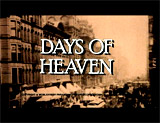
Days of Heaven (1978), 95 minutes, D: Terrence Malick
Director Terrence Malick's second feature film was an original, lyrical and gorgeously-photographed work of art, by Oscar-winning cinematographer Nestor Almendros who provided rewarding visuals to tell the film's story. It was about a complex love triangle among itinerant workers in Texas farm country in the early 20th century. The exquisite film of exceptional visual beauty was shot in the rolling plains of southern Alberta (Canada), not Texas. It has been universally acclaimed as a cinematographic masterpiece with grand pastoral vistas, endless field and sky shots and artfully composed scenes reminiscent of the Hudson River School landscape painters. Most of the film was shot during the "golden or magic hour" of sunset's lingering dusk, giving it a dreamy warmth, romanticism and soft glow, although the time constraint limited shooting to only 25 minutes each day. The tragic, turn-of-the-century tale was about a hot-headed Chicago steel worker (Richard Gere) who fled to the wheat fields of the Texas Panhandle following the accidental murder of the mill foreman, with his lover-girlfriend (Brooke Adams) and his younger 13 year-old sister (Linda Manz) (who provided the film's raw commentary). He took up itinerant work for the fall harvest with a wealthy and prosperous but terminally-ailing and lonely farmer (Sam Shepard). A crowded steam locomotive with farmhands atop them chugged through agricultural landscapes, and the anchoring farmhouse stood three stories tall as a lone fixture amidst immense, sensually-rippling fields of golden wheat. When an unusual love triangle developed, the farm-hand pretended that his girlfriend was his sister and encouraged her marriage to the farmer, hoping that they could escape from poverty. The 'heavenly,' golden-hued, contented, and idyllic days of the itinerant workers were soon shattered by revealed deceptions and a destructive locust plague and fire - the tragic consequences of greed and jealousy.



The Deer Hunter (1978), 183 minutes, D: Michael Cimino
Michael Cimino's disturbing, emotionally powerful, Best Picture-winning film was about three friends who were forever changed by imprisonment during the Vietnam War. Michael Vronsky (Robert De Niro), Nick (Christopher Walken), and Steven (John Savage) were three close buddies from the steel mill town of Pittsburgh who hung out in bars and hunted deer. Steven was getting married while Michael and Nick competed over the affections of Linda (Meryl Streep). Their lives were turned upside down when they were drafted into the airborne infantry to fight in Vietnam, and were soon captured by the enemy. There, among other things, they were forced to endure a game of Russian Roulette in the P.O.W. camp. Michael and Steven managed to escape and return home, but each of their lives were forever changed by the experience. Linda's life, already strained and grim with an abusive alcoholic father, found solace with Nick's best friend Mike after his arrival home, when both grieved and struggled with the loss of his best friend and her lover.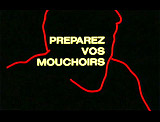
Get Out Your Handkerchiefs (1978, Fr./Belg.) (Préparez Vos Mouchoirs), 109 minutes, D: Bertrand Blier


Grease (1978), 110 minutes, D: Randal Kleiser

Halloween (1978), 90 minutes, D: John Carpenter
See entire Halloween film series.
Young film director/writer John Carpenter's genuinely scary, stylistic and tasteful, extremely well-crafted slasher/horror classic featured the ominous tagline: "The Night HE Came Home!" The efficiently-suspenseful, surprise hit film, with a jarring and memorable musical theme, grossed over $47 million domestically (on a budget of $325,000), and about $70 million (worldwide) - and became one of the most successful independent films ever made. This PG-rated, low-budget film (filmed in only twenty days) invented many of the "slasher" film cliches (along with its predecessors: George A. Romero's Night of the Living Dead (1968), the big-budget The Exorcist (1973), and Tobe Hooper's The Texas Chainsaw Massacre (1974)), but also paid homage to Alfred Hitchcock's Psycho (1960) in the initial murder of the film. Unfortunately, this serial killer slasher film spawned many run-of-the-mill inferior sequels of its own, and other imitation films. The horror-thriller told about a psychotic, criminally-insane murderer, Michael Myers (Nick Castle), who was on a homicidal rampage after escape from an institution. Fifteen years earlier in 1963 as a young 6 year-old boy (Will Sandin), he had murdered his 17-year-old sister Judith Margaret Myers (Sandy Johnson) on Halloween night, and had now returned as a 21 year-old after escaping from a sanitarium-asylum, to again terrorize his hometown of Haddonfield, Illinois. Resourceful, teenaged baby-sitter Laurie (Jamie Lee Curtis in her film debut that launched her career and dubbed her the "Scream Queen") was tending 8-year-old Tommy Doyle (Brian Andrews) when she became Myers' next stalking victim in two homes, while obsessed and crazed psychiatrist Dr. Sam Loomis (Donald Pleasence) was in continual pursuit. [Note: Loomis had the same name as the boyfriend character in Psycho (1960).] In the film's climax, Loomis shot the already-wounded, masked "boogeyman" Michael six times, causing him to fall from a second floor balcony, but he inexplicably survived and vanished.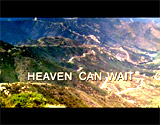
Heaven Can Wait (1978), 100 minutes, D: Warren Beatty, Buck Henry


The Last Waltz (1978), 117 minutes, D: Martin Scorsese
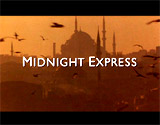



Midnight Express (1978, UK/US), 120 minutes, D: Alan Parker
Oliver Stone's screenplay for this crime drama was based on the 1977 non-fiction, biographical book Midnight Express, written by American college student Billy Hayes (co-authored with William Hoffer). The book told the harrowing story of Billy's arrest, imprisonment, and ultimate escape (on the "midnight express") from a Turkish prison for trying to smuggle hashish out of the country. In the film's riveting and spellbinding opening (with amplified sounds and Giorgio Moroder's pulsating score), Billy Hayes (Brad Davis) taped foil-wrapped packets of two kilos of hash to his torso. While boarding a plane back to the US in 1970 at the Istanbul airport, the twitchy Billy, who was accompanied by his girlfriend Susan (Irene Miracle), became ultra-paranoid and nervous, and was sweating profusely. His heartbeat was amplified on the soundtrack as he went through the inspection area, populated with increased security due to recent terrorist hijacking threats. After being frisked on the tarmac as he was boarding his airplane, the drugs were found on him. He was then further strip-searched and interrogated more intensely, before ultimately being imprisoned in a brutally-hellish Turkish facility where he was subjected to brutal beatings, and various atrocities including rape and torture by sadistic guards - including chief guard Hamidou (Paul L. Smith). Other prisoners included heroin-addicted Britisher Max (John Hurt), fellow American Jimmy Booth (Randy Quaid) in prison for stealing mosque candlesticks, and drug-smuggling Swede Erich (Norbert Weisser). Billy's father (Mike Kellin) - a US consulate representative, and a Turkish defense lawyer worked on his case, and Billy was sentenced to a 4 year, 2 month term. However, when he was nearing his release date after three and a half years, a new court date and trial were scheduled, and his original sentence was overturned. He was sentenced for further imprisonment "for a term no less than 30 years" - for smuggling. Billy argued passionately against the authorities: ("I've been good. And now I'm damn tired of being good because you people gave me the belief that I had 53 days left..."). He also shrieked at the judge: "For a nation of pigs, it sure is funny you don't eat 'em. Jesus Christ forgave the bastards, but I can't. I hate. I hate you, I hate your nation, and I hate your people. And I f--k your sons and daughters because they're pigs! You're a pig. You're all pigs!" Now with a longer sentence, Billy began to plot an escape through the sewer's tunnel system beneath the prison, but the attempt failed at the tunnel's dead end. In one shocking scene of Billy's mental breakdown after being ratted on, he vengefully bit off the tongue of traitorous fellow prisoner Rifki (Paolo Bonacelli) with his teeth and spit it out. The film concluded many months later when Billy made another daring attempt to escape, after he bribed chief guard Hamidou and was being taken to the sanitarium. He became the victim of an attempted rape when the guard unbuckled and lowered his pants and approached. Billy rushed at him head-first, propelling the guard's back into a sharp coat hook and accidentally impaling and killing him. Billy - wearing the guard's stolen uniform, walked out the front door into the sunlight, passed a guard jeep, and ran for freedom. The closing titles were presented over a freeze-frame of Billy's run and return to the US for a reunion and homecoming - accompanied by a montage of still-framed B/W photographs: ("On the night of October 4th, 1975 Billy Hayes successfully crossed the border to Greece. He arrived home at Kennedy Airport 3 weeks later").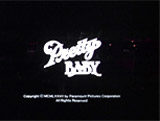


Pretty Baby (1978), 110 minutes, D: Louis Malle
Louis Malle's provocative, coming-of-age, R-rated American debut film - a semi-scandalous picture upon its release, was criticized for being child porn. The tagline described the film's point of view - mostly framed from a young child's vantage point: "The image of an adult world through a child's eyes." However, it was gorgeously photographed by Bergman-cinematographer Sven Nykvist. The fictional yet historically-inspired drama was based on Al Rose's 1974 non-fictional book Storyville, New Orleans: Being an Authentic, Illustrated Account of the Notorious Red-Light District. It was realistically set in a 1917 New Orleans bordello in the legalized red-light district of Storyville during the Great War. Customers were entertained with ragtime music in the brothel by cathouse piano player "The Professor" (Antonio Vargas). The erotic, slice-of-life drama told the plodding, tragic coming-of-age story of a virginal, jaded 12 year-old Violet (former child model Brooke Shields at 11 years of age in her breakthrough role) - a pre-teen child prostitute who lived with her languid New Orleans brothel mother Hattie (Susan Sarandon). Ernest J. Bellocq (Keith Carradine) often frequented the bordellos to photograph the working girls. Once Violet turned 12, the brothel madam - cocaine-sniffing Madam Nell (Frances Faye) encouraged brothel patrons to bid in an auction for the matter-of-fact honor of taking Violet's virginity. Wearing a sheer nightgown and holding a lighted sparkler, Violet was carried out and paraded around on a red velvet platform. Violet's first night as a prostitute went to the highest bidder ($400 cash) (Don Lutenbacher). To better herself and become more respectable, Hattie decided to marry one of her rich clients-customers, Mr. Alfred Fuller (Don Hood) and move to St. Louis. Violet refused to go with her mother, and Hattie gave her future husband the impression that Violet was her younger sister, not her daughter! As Hattie left, she promised to return at some time to retrieve Violet (once she told her husband the truth). In the meantime, the abandoned (or deserted), coquettish and headstrong Violet (after a run-in with Madam Nell) decided to move in with Bellocq to get away from the brothel. Bellocq took the young girl into his residence - signifying the complete loss of her innocence. At one point earlier, Violet naively told him: "I love you once, I love you twice, I love you more than red beans and rice!" Their relationship (with such an age gap) was highly unusual and often contentious, more like a squabbling parent-child. After many quarrels with Bellocq, Violet returned to the brothel although by now, the Storyville brothels were no longer legal and were closing down. Violet had little choice, now abandoned, but to marry Bellocq. A license was acquired before a judge and the ceremony was officiated in a church. Two weeks later, Hattie arrived to take back Violet, when she unexpectedly arrived from St. Louis with her new husband Mr. Fuller, a pavement contractor. She claimed: "I told him all about you, Violet, and he insisted that we come and get ya....And he wants you to come home with us." The marriage was considered illegal and null at her age, without Hattie's consent: "It is not legal without my consent. Mr. Fuller argued that Violet would thrive with a more conventional and proper life and a chance at being schooled. Although Bellocq was adamant and refused: "Well, you cannot take her! I can't live without her... that's all," he had no choice in the matter, and neither did Violet. At the train station before departure, Mr. Fuller took a few family snapshots - the last film image was an ambiguous freeze-framed image of an unsmiling Violet - not really a child anymore.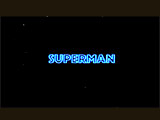


Superman The Movie (1978), 143 minutes, D: Richard Donner
See Superman film series.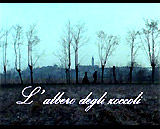
The Tree of Wooden Clogs (1978, It.) (aka L'Albero Degli Zoccoli), 186 minutes, D: Ermanno Olmi



An Unmarried Woman (1978), 124 minutes, D: Paul Mazursky
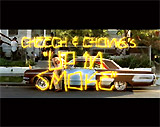

Up in Smoke (1978), 86 minutes, D: Lou Adler, Tommy Chong
Co-directors Lou Adler and Tommy Chong's successful low-budget effort was a pro-cannabis anarchic buddy comedy. The classic 'drug humor flick' was filled with funny, drug-related stoner dialogue between potheads Pedro De Pacas (Cheech Marin) and Man Stoner (Tommy Chong), two wayward, mostly-unemployed rock musicians. It was the comedy duo Cheech & Chong's first feature-length movie, with a script written by the two comedians who were also the film's principal stars. The cult classic (the best of the stoner comedies) was made on a budget of $2 million (with mostly on-location shoots in Los Angeles and at the border), and grossed $44.4 million (although some sources quoted that it made $104 million). It was an off-shoot of the comedy act of Cheech Marin and Thomas 'Tommy' Chong, who were managed by Lou Adler, the film's producer and co-director. The film was originally greeted with skepticism and doubt for its juvenile, toilet-humor and non-stop drug jokes, but after initial test screenings, it was obvious that the film would be a major hit. In the opening scene, hippie stoner and rock band drummer Anthony "Man" Stoner (Tommy Chong) was ejected from his house by his father (Strother Martin) for not finding legitimate work; he ended up in his broken-down VW convertible (with a fake Rolls-Royce grill) at a beach where he was forced to spend the night. The next day, Chicano Pedro (Cheech Marin) was cruising in his low-rider for females; he noticed a stacked female (with melons inside his shirt) thumbing a ride by the side of the road. After picking up the female, Pedro soon realized he had been tricked by Stoner. The duo, after learning they were both band members, joined together for a highly-motivated search for ultimate highs, and they frequently toked joints in Pedro's car, filling it completely with smoke. Later in the film, the two were caught up in an Immigration (the "Migra") and Naturalization Service (INS) raid, and everyone was arrested; Pedro's own cousin had reported the party to authorities, knowing it would result in a free deportation bus ride to Mexico to attend a wedding (with a free lunch). The two unexpectedly found themselves deported and on a bus to the border town of Tijuana in Mexico. Pedro phoned his Uncle Chewie in town, and arranged to drive his uncle's van back into the US, as a way to smuggle in cheap upholstery. Pedro went to the wrong address for the van - not the upholstery shop of his uncle, but a marijuana processing plant disguised as an upholstery shop; after picking up the "van" (entirely manufactured from "fiberweed" - solid and liquid marijuana), and through a series of fortunate mishaps, the two were able to cross the Mex-California border, and evade the efforts of single-minded Sgt. Stedenko (Stacy Keach) and his team to apprehend them. On the advice of two female hitchhikers: busty blonde Debbie (Anne Wharton), and druggie-redhead Jade East (Zane Buzby), the two decided to participate in an upcoming Battle of the Bands contest that was to be held at Los Angeles' Roxy Theatre. During the rock concert competition (as the Sgt and his team, disguised as Hare Krishna members, attempted to arrest the duo, without luck), the other bands were poorly received by the crowd. Pedro's band (Alice Bowie) and totally drugged-out drummer Stoner appeared on stage, dressed as a giant red Quaalude with a shiny blue cape. Lead guitarist/singer Pedro was dressed in drag in a frilly pink tutu (with a Minnie Mouse cap). As they played, a discarded lit cigarette ignited a fire beneath the van, and it went "up in smoke." The group won the contest, aided by fumes from their burning van funneled into the theatre through its ventilation system. The Sgt. also succumbed to "munchies" cravings with orders of pizza and other goodies, and angrily admitted: "I am stoned!"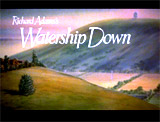


Watership Down (1978, UK), 101 minutes, D: Martin Rosen
Screenwriter-producer-director Martin Rosen brilliantly adapted Richard Adams's classic British dystopian novel - a dark allegory about seeking freedom. This was a hand-drawn animation effort, expressionistic and beautiful, with voice-work by the best British actors (John Hurt, Ralph Richardson, Richard Briers, and Denholm Elliott). It was about a community of rabbits fleeing for safety and happiness after their warren came under a terrible threat of destruction.